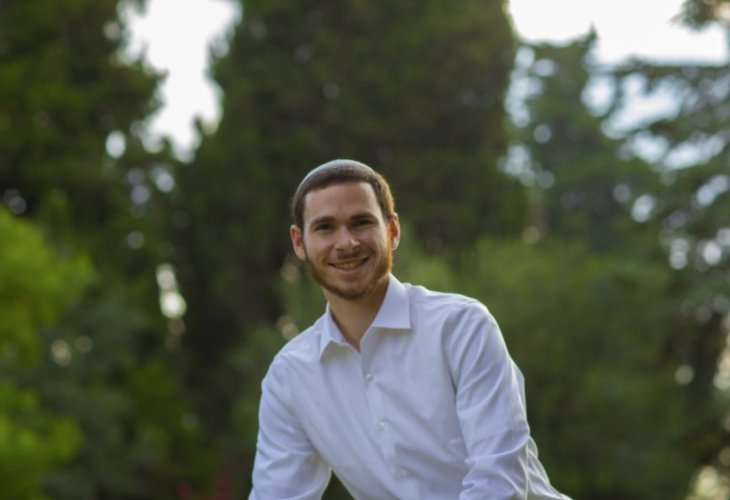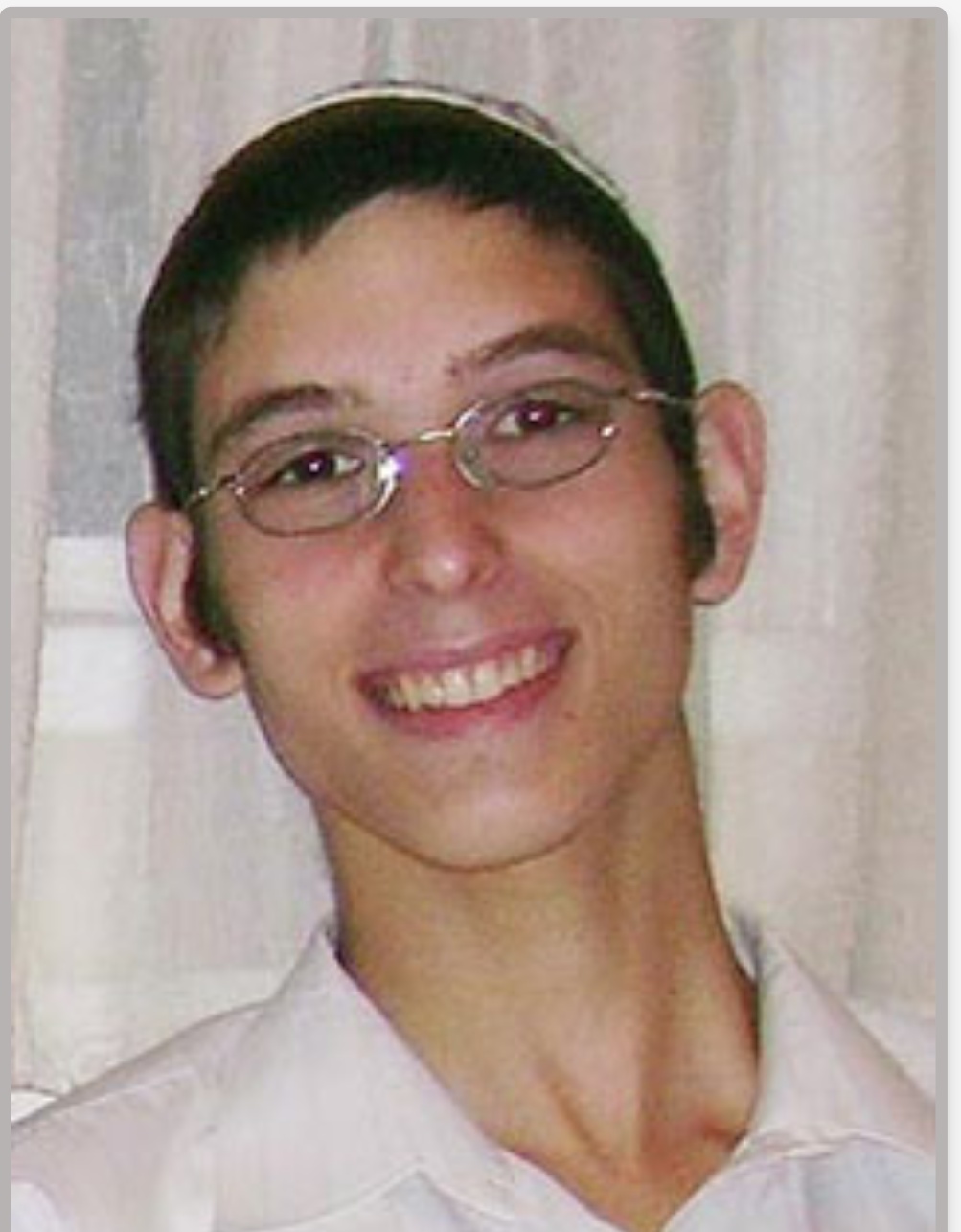R' Aviel Kotler: "We Were Sure They Were Firecrackers, Then We Realized It Was a Terror Attack"
Eleven years ago, on the eve of Adar II, R' Aviel Kotler witnessed the horrific attack at the Mercaz HaRav Yeshiva. Since that day, he has been trying to understand how to fulfill the commandment 'When Adar enters, we increase in joy' and what the commandment of joy truly means. Now, he is publishing a book about it.
 R' Aviel Kotler (Photo: Private Album)
R' Aviel Kotler (Photo: Private Album)8:30 PM, Thursday, the eve of Rosh Chodesh Adar II 5768, gunshots are heard in the Kirat Moshe neighborhood of Jerusalem. Aviel Kotler, then a 12th-grade student at the Yeshivat Hesder Mercaz HaRav, is in the Beit Midrash. He is unaware that at this moment eight holy yeshiva students are being murdered — three from Mercaz HaRav and five from his own yeshiva, among them his good friend, Yochai Lifshitz, may God avenge his blood. He does not imagine that his life will change from this point forward.
 Yochai Lifshitz HY
Yochai Lifshitz HYEleven years have passed, but in a conversation with R' Aviel, now an educator at the Mekor Chaim high school yeshiva and a military rabbi in reserve, he notes that he cannot forget a single moment of the horror. "It was on Thursday night," he recalls of that dark evening, "there was some demonstration that day, so we were released early in the afternoon and then returned to the yeshiva at around seven-thirty in the evening. The plan was to have dinner followed by a traditional Rosh Chodesh party. I remember looking for my study partner when suddenly shots were heard. Frankly, at first, we thought they were firecrackers. It was Rosh Chodesh Adar, after all. A moment later, someone from the higher classes told us they were gunshots and that a terrorist might have infiltrated the yeshiva. We all ran to the shelter, terrified, where we recited Psalms and prayed."
Did you understand what was happening?
"At that stage, we didn't know there were casualties, but we heard the shots were really close, and afterwards, we were informed that the terrorist had been killed and the danger was over. From that moment, we were busy with phone calls: reaching out to friends to ensure they were okay and calling parents to reassure them. Meanwhile, the parents arrived at the yeshiva, and by around midnight, we all gathered in the Beit Midrash, crying and wailing, and the head of the yeshiva reported, in great tears, about all those who were no longer with us."
After the devastating news, Kotler says that a terrible week of funerals and visiting the homes of the bereaved families followed. "It was a month of Adar where I couldn't understand how to be joyful in any way," he notes. "It was inconceivable because the sadness was immense, enveloping us and accompanying us everywhere."
At the end of that year, Kotler moved to study at the Beit El Yeshiva, but the difficult images continued to accompany him, and to him, it felt like the story was not over. "Throughout the days that followed, questions about the commandment to rejoice continually emerged in my mind and how we are supposed to fulfill it even in difficult situations. I embarked on a personal journey, reading materials on the topic and trying to learn about Jewish joy and its essence. In the process of learning, some things sharpened for me, but new questions arose, and so I continued to study and delve deeper over the past ten years."
Rejoicing Despite Sadness
The result can be seen in the book that Kotler is publishing these days. The book, titled 'The Call to Joy,' presents articles and insights on the topic of joy, aiming to understand precisely how we should rejoice and what Mordechai and Esther intended when they commanded us to celebrate Purim.
"In the book, I discuss the joy of Purim in contrast to the memory of the destruction of the Temple," explains R' Aviel, "It is interesting to note that it is documented in the books of Responsa and legal decisions that there is an ancient custom advising people to hang signs with the words 'When Adar enters, we increase in joy' in the area of the house designated for remembering the destruction. This raises the question: We need to rejoice in Adar, but why at the expense of remembering the destruction? Moreover, there is guidance that even the mourners of Zion and Jerusalem are happy and rejoice during the days of Purim, bathing and wearing white. How is it possible then that the joy of Purim is seemingly at the cost of the memory of the destruction? Naturally, the explanation is comprehensive and deep, but among other things, I refer to the idea that joy brings redemption. There is also a comparison between the month of Adar and the month of Av, and further explanations that are deep and insightful.
"The interesting thing is that over the years I delved into the subject, I too changed. In the early years, I mainly studied texts from sources that show how important it is to be joyful, and I developed a kind of denial of sadness. Only later did I discover the other side of joy and understood that sometimes it is possible to rejoice precisely out of sadness. Because it is precisely the sources of pain and sorrow that deepen the joy and give it meaning."
Explain yourself.
"I think we all experience moments of sadness and loss in our lives. For example, if we take the students of Mercaz HaRav who were murdered, I can talk about their noble virtues and the joy of life of every single one of them, for they were truly exceptional. The unspoken will they left behind is that we continue to perpetuate their virtues and go on with the joy that always accompanied them. If we don't channel the pain towards joy, then they died in vain. I taught myself how to grieve various things and, at the same time, specifically leverage the pain into real joy. In the process of self-work that I did, I also managed to find 101 ways to achieve joy, which I drew from figures that appear in the Tanakh. From each figure, we learn a different way to rejoice and be connected to Hashem. I also conduct workshops on the attribute of joy, combining practical tools from Torah sources."
Do you think reading the book can practically impact our daily lives?
"Certainly. Sadness can seize us at any time, and we need to simply teach ourselves to process it correctly and turn it into joy. This could be when we miss a bus, fail a job interview, catch the flu, or face difficulties in Shalom Bayit, or in any other area. Joy can always save the situation.
"It is also worth knowing that when we are afflicted by sadness, it envelops us and seemingly draws us into ourselves, making us unaware of our surroundings and not attentive to it, sometimes even harming it. In contrast, joy by its nature wants to expand outward, it is contagious and causes others to rejoice as well. It's not for nothing that they say laughter is contagious, and incidentally, this is also what led me to write the book, because it's not enough for me alone to be joyful; I have a drive to spread the joy and infect others."
Kotler notes that recently he met with the mother of Yochai Lifshitz, may God avenge his blood, one of the victims of the attack. "Yochai was my closest friend, and when I talked to his mother, I burst into tears. I told her that every day that passes, I remember Yochai's character, a joyful and helpful figure, who never let any difficulty take away his happiness. Yochai, full of joie de vivre, is the one who pushed me to publish the book, in his honor and memory."
R' Aviel Kotler's email - ayekot44@gmail.com

